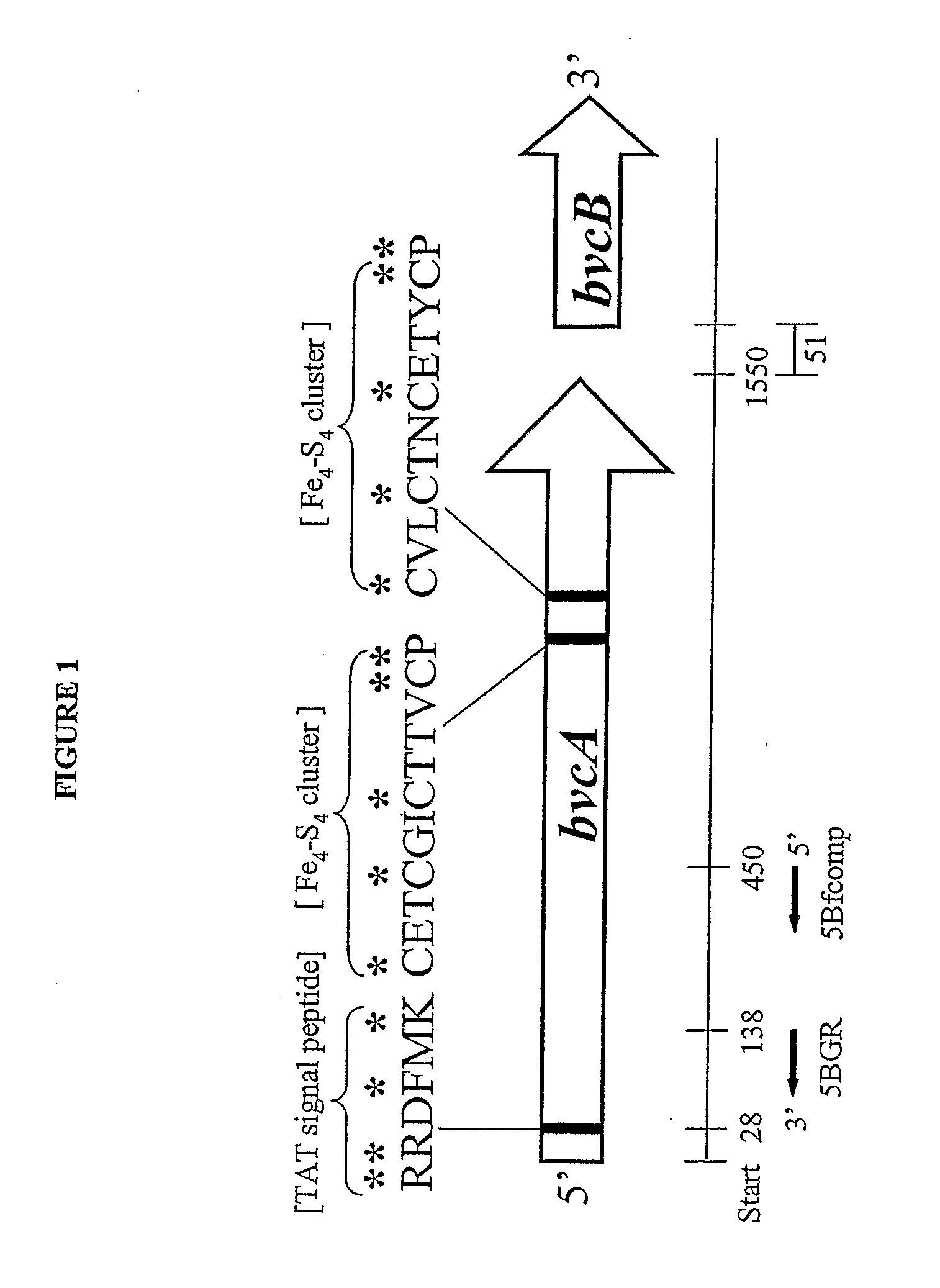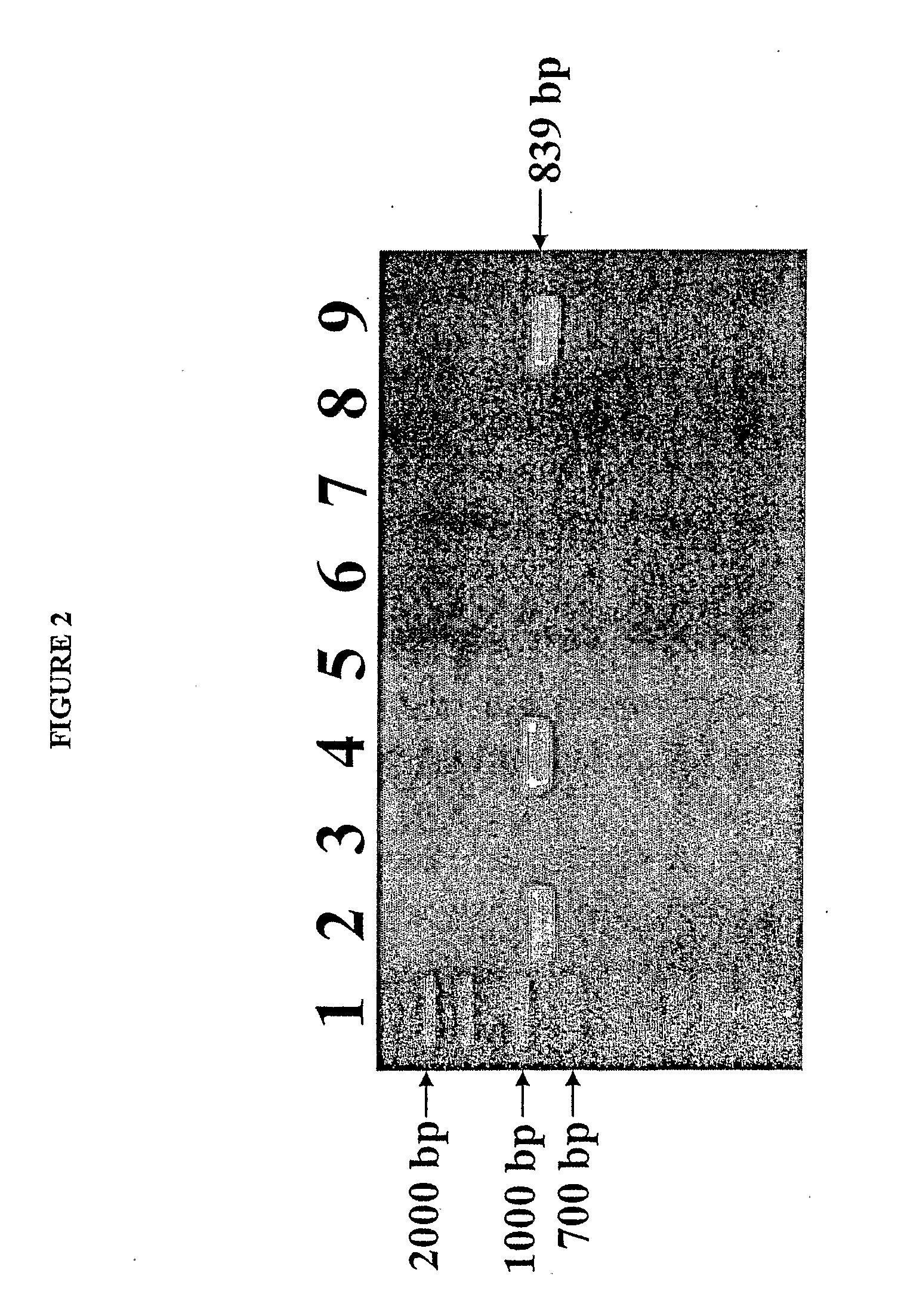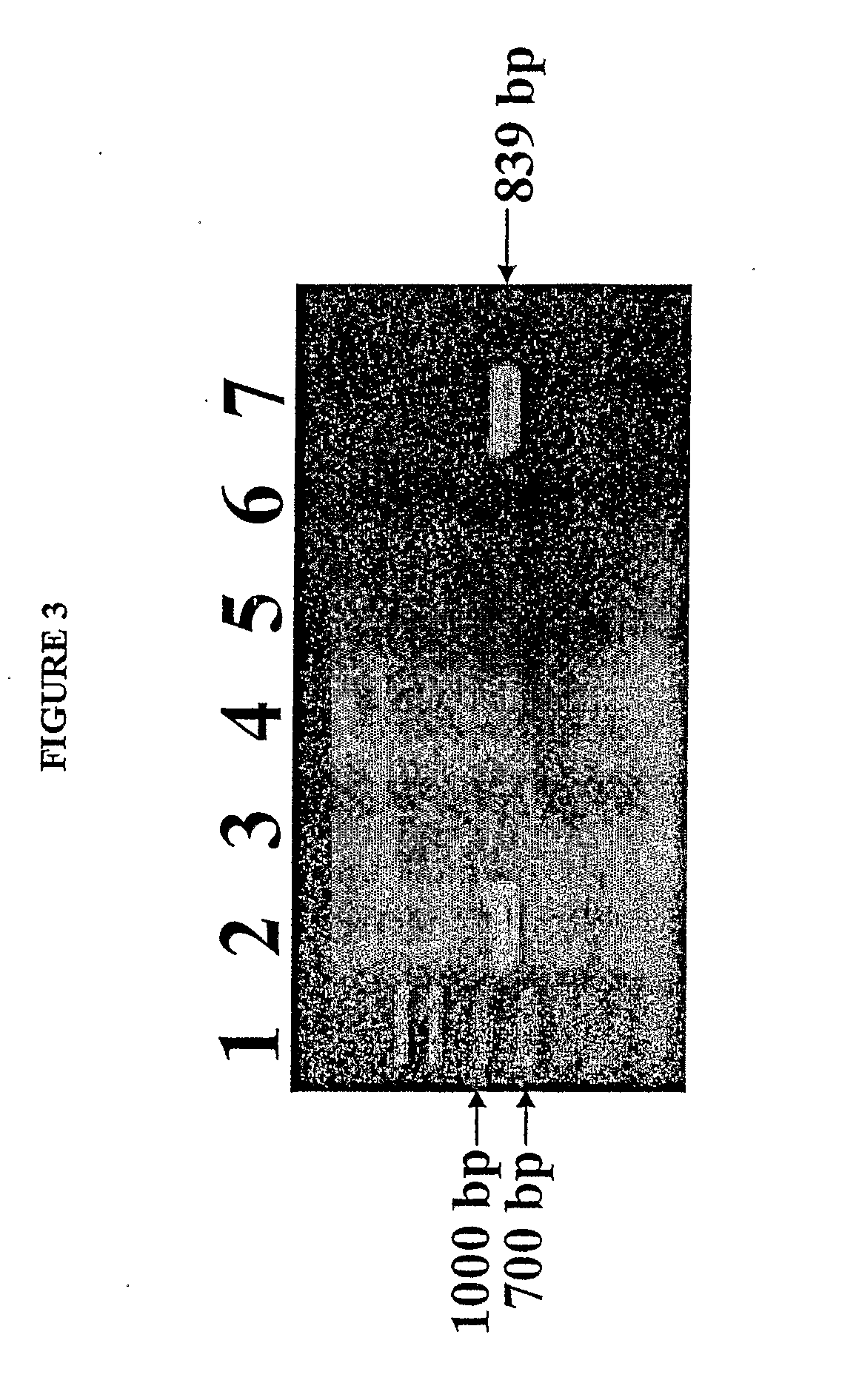Isolated reductive dehalogenase genes
a technology of reductive dehalogenase and genes, which is applied in the field of isolated reductive dehalogenase genes encoding reductive dehalogenase, can solve the problems of difficult identification of bacteria with different dechlorinating activities, limited applicability of approaches, and threatening drinking water quality in most industrialized countries
- Summary
- Abstract
- Description
- Claims
- Application Information
AI Technical Summary
Benefits of technology
Problems solved by technology
Method used
Image
Examples
example 1
Isolation of DNA from VC-Dechlorinating Cultures
[0089]Genomic DNA was obtained from pure cultures of Dehalococcoides sp. strain BAV1, and several VC-dechlorinating enrichment cultures derived from river sediments (the Red Cedar, Au Sable and Père Marquette Rivers, all three in Michigan (Löffler F., et al. (2000) Appl. Environ. Microbiol. 66:1369-1374) and chloroethene-contaminated aquifers (the Minerva site in Ohio, the Hydrite Chemical site in Wisconsin, and the Bachman Road site in Michigan (Lenvay, J., et al. (2003) Environ. Sci. Tech. 37:1422-1431).
[0090]VC-dechlorinating cultures were grown in 160-ml serum bottles containing 100 ml reduced basal salts medium amended with acetate (2 mM) as a carbon source, hydrogen (0.2 mmoles) as electron donor, and VC (0.12 mmoles) as electron acceptor as described by He, J., et al. (2003) Nature 424:62-65.
[0091]Genomic DNA was also available from isolates Dehalococcoides sp. strain CBDB1, Dehalococcoides sp. strain FL2, Dehalococcoides etheno...
example 2
Identification of RDase Genes
[0092]RDase genes were identified by amplifying genomic DNA using specially designed PCR primer pairs targeted to known conserved regions of RDase genes. Clone libraries were established by cloning the resulting amplicons in E. coli. The sequences of the cloned gene fragments contained in the clone libraries were compared with known RDase gene sequences.
Primer Design
[0093]Multiple alignments of full-length protein and DNA sequences of TceA (AAN85590, AAN85588, AAF73916A) and RDases identified from the genome of Dehalococcoides ethenogenes strain 195 were constructed using ClustalW and ClustalX (see, e.g., Thompson, J., et al. (1997) Nucleic Acid Res. 25:4876-4882). Conserved amino acid sequences were identified and used to design degenerate PCR primers. The following conserved regions were targeted for designing forward and reverse primers, respectively a di-arginine containing stretch near the amino-terminus of the RDases (i.e., RRXFXK) and a region in ...
example 3
Expression and Analysis of RDase Genes
RNA Isolation
[0099]Biomass was collected by centrifugation and cell pellets were immediately frozen at −70° C. All solutions used for RNA extraction were prepared with diethyl pyrocarbonate (DEPC)-treated water, free of DNases and RNases-. Total RNA was extracted using the RNeasy extraction kit (Qiagen) according to the manufacturer's recommendations with the following modifications to enhance cell lysis and RNA yields. The cell pellet was suspended in 100 μl lysozyme digestion buffer (30 mM Tris-HCl, 1 mM EDTA, pH 8.0, 15 mg / ml lysozyme), 20 μl proteinase K (25 mg / ml) and 10 μl achromopeptidase (1,800 U / μl). The suspension was mixed and incubated at room temperature for 10 min, before 50 μl 0.1% Triton X-100 was added, and the mixture was shaken vigorously for 10 sec. Lysis buffer RLT (350 μl, provided with the RNeasy extraction kit) was added, and the lysate was transferred into a MicroRNA Bead Tube (Mo Bio Laboratories, Carlsbad, Calif.) and ...
PUM
| Property | Measurement | Unit |
|---|---|---|
| Fraction | aaaaa | aaaaa |
Abstract
Description
Claims
Application Information
 Login to View More
Login to View More - R&D
- Intellectual Property
- Life Sciences
- Materials
- Tech Scout
- Unparalleled Data Quality
- Higher Quality Content
- 60% Fewer Hallucinations
Browse by: Latest US Patents, China's latest patents, Technical Efficacy Thesaurus, Application Domain, Technology Topic, Popular Technical Reports.
© 2025 PatSnap. All rights reserved.Legal|Privacy policy|Modern Slavery Act Transparency Statement|Sitemap|About US| Contact US: help@patsnap.com



